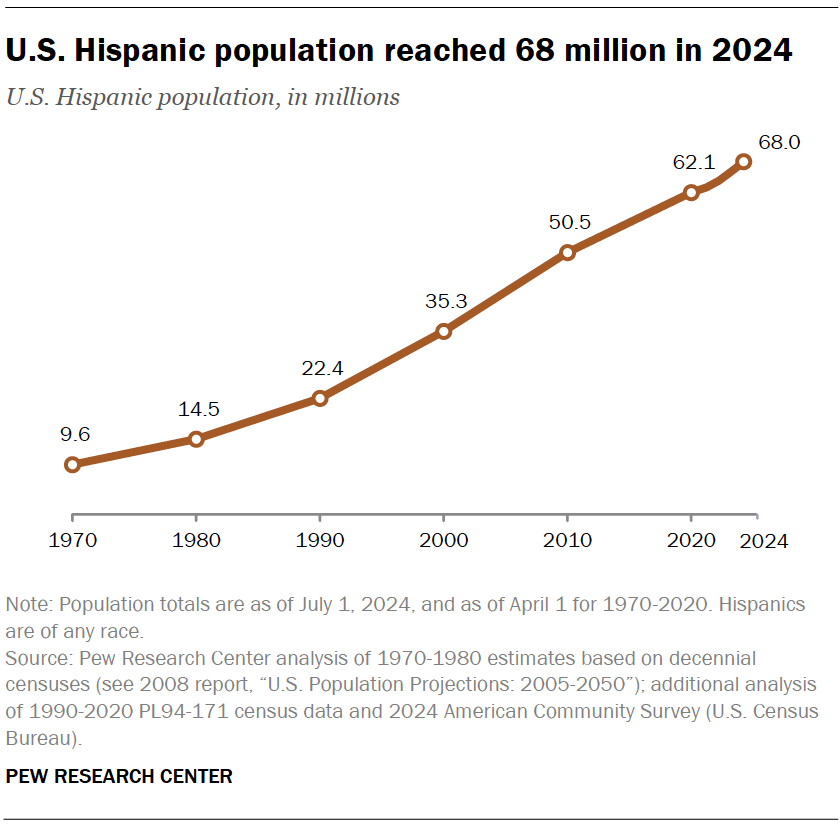Report on New Jersey’s Vocational-Technical School Initiatives in Healthcare Education
Addressing Healthcare Demands in Alignment with Sustainable Development Goals
In response to a projected surge in demand for healthcare professionals, New Jersey’s county vocational-technical schools are implementing strategic educational programs. These initiatives directly support several United Nations Sustainable Development Goals (SDGs), primarily focusing on ensuring healthy lives (SDG 3), providing quality education (SDG 4), and promoting decent work and economic growth (SDG 8). By creating structured pathways from high school to professional healthcare careers, these schools are building a resilient workforce to serve an aging population and strengthen the state’s economy.
Strategic Educational Pathways for Health and Well-being (SDG 3 & SDG 4)
Monmouth County’s “Nursing Bridge to Excellence” Program
The Monmouth County Vocational School District (MCVSD) has launched a program designed to create a seamless educational pipeline for aspiring nurses, contributing to SDG 3 by increasing the number of qualified health workers and SDG 4 by ensuring inclusive and equitable quality education.
- Multi-Institutional Partnership (SDG 17): A collaboration between MCVSD, Brookdale Community College, and Kean University provides a clear, cost-effective route to a Bachelor of Science in Nursing (BSN).
- Program Structure:
- Students begin a two-year pre-nursing program at MCVSD, completing prerequisites for an Associate Degree in Nursing (ADN).
- Participants are guaranteed acceptance into Brookdale Community College to complete their ADN and clinical training.
- Graduates can then transition to Kean University to obtain a BSN.
- Early Career Integration: Students gain practical experience and can become certified home health aides after their first two years, allowing them to earn income while continuing their education, which supports SDG 8 (Decent Work and Economic Growth).
Enhancing Infrastructure and Partnerships for Decent Work (SDG 8 & SDG 17)
Ocean County Vocational Technical School Program Expansion
Ocean County Vocational Technical School (OCVTS) has expanded its pre-nursing program by relocating to a new, state-of-the-art facility at Ocean County College. This development enhances the quality of vocational training (SDG 4) and forges stronger partnerships (SDG 17) to meet local employment needs.
- Increased Capacity and Curriculum Focus: The move has nearly doubled the program’s capacity and shifted the curriculum from a certified nursing assistant focus to a broader pre-nursing scope.
- Industry-Relevant Certifications: The program equips students with valuable credentials to enter the workforce, directly contributing to SDG 8.
- Patient Care Technician Certification
- CPR Certification
- OSHA Certification
- Partnerships for Practical Learning: Collaboration with Encompass Health provides students with essential clinical hours, while a partnership with Ocean County College offers dual credit options, reducing inequalities in access to higher education (SDG 10).
Conclusion: A Call for Collaborative Action
Building a Sustainable Healthcare Workforce
New Jersey’s vocational-technical schools are proactively addressing critical healthcare shortages through innovative programs that align with global sustainability targets. These initiatives provide affordable and accelerated career pathways, ensuring a new generation is prepared to support community health and well-being (SDG 3). To further strengthen these efforts and achieve the goals of quality education (SDG 4) and decent work (SDG 8), continued collaboration is essential.
Opportunities for Partnership (SDG 17)
Healthcare employers and professionals are encouraged to partner with the county vocational-technical schools to support these vital programs through:
- Job shadowing opportunities
- Facility tours and site visits
- Guest speaking engagements
Which SDGs are addressed or connected to the issues highlighted in the article?
Sustainable Development Goals Identified
- SDG 3: Good Health and Well-being: The article’s central theme is addressing the growing demand for healthcare workers due to an “aging workforce coupled with an aging population” and “burnout of current professionals.” The programs described are a direct response to this need, aiming to strengthen the health workforce, which is essential for ensuring healthy lives and promoting well-being.
- SDG 4: Quality Education: The article focuses on the creation and expansion of vocational education programs. It details how “New Jersey’s county vocational-technical schools” are providing “accelerated high school students’ training and preparation for health careers.” This directly relates to providing inclusive and equitable quality education and promoting lifelong learning opportunities through technical and vocational training.
- SDG 8: Decent Work and Economic Growth: The article highlights that “health care occupations will outpace all other categories in job growth over the next decade” and is a “major employer and contributor to New Jersey’s GDP.” The vocational programs create “clear pathways for students to enter this industry,” thereby promoting productive employment and decent work for young people.
- SDG 17: Partnerships for the Goals: The success of the initiatives described relies on collaboration. The article explicitly mentions partnerships, such as the one between “Monmouth County Vocational School District… Brookdale Community College, and… Kean University” for the Nursing Bridge to Excellence program, and the partnership between OCVTS and “Toms River-based Encompass Health” for clinical hours. This demonstrates the importance of multi-stakeholder partnerships to achieve sustainable development.
What specific targets under those SDGs can be identified based on the article’s content?
Specific SDG Targets Identified
- Target 3.c: “Substantially increase health financing and the recruitment, development, training and retention of the health workforce…” The article directly addresses this target by describing programs designed to recruit and train the next generation of healthcare professionals. Initiatives like the “Nursing Bridge to Excellence program” and the expanded “pre-nursing program” at OCVTS are concrete actions to increase the health workforce in response to projected shortages.
- Target 4.3: “By 2030, ensure equal access for all women and men to affordable and quality technical, vocational and tertiary education, including university.” The article describes how the programs offer a “seamless, cost-effective, and flexible route” for students to transition from high school vocational training to community college and university, ultimately earning associate and bachelor’s degrees in nursing.
- Target 4.4: “By 2030, substantially increase the number of youth and adults who have relevant skills, including technical and vocational skills, for employment, decent jobs and entrepreneurship.” The entire focus of the vocational programs is to equip students with job-ready skills. The article notes that students gain practical experience in an “on-site simulation nursing lab,” participate in “clinical rotations at area hospitals,” and can graduate with certifications like “patient care technician certification and other CPR and OSHA certifications.”
- Target 8.6: “By 2020, substantially reduce the proportion of youth not in employment, education or training.” Although the target date has passed, the principle remains relevant. The programs create structured pathways that keep students engaged in education and training that leads directly to employment. The article states students have the “option to work as they continue their studies,” ensuring they are not left without a clear direction after high school.
- Target 17.17: “Encourage and promote effective public, public-private and civil society partnerships…” The article is a case study of this target in action. It details the public partnership between a vocational school district, a community college, and a university in Monmouth County. It also highlights the public-private partnership between OCVTS and Encompass Health, where a private healthcare provider supports student training.
Are there any indicators mentioned or implied in the article that can be used to measure progress towards the identified targets?
Indicators for Measuring Progress
- Number of students enrolled in and graduating from healthcare vocational programs: The article implies this indicator by mentioning the “first cohort of students” in the Monmouth program and that the Ocean County program was able to “nearly double in size” after moving to a new facility, showing a focus on increasing the number of trainees.
- Number and type of certifications obtained by students: Progress towards Target 4.4 can be measured by tracking the certifications students earn. The article explicitly mentions that students can become a “certified home health aide” or obtain a “patient care technician certification and other CPR and OSHA certifications.”
- Licensure examination pass rates: A key measure of the quality and effectiveness of the training is the success rate on professional exams. The article points to this by highlighting that the OCVTS Licensed Practical Nurse program “boasts nearly a 100% pass rate for the NCLEX (National Council Licensure Examination).”
- Number of students transitioning to higher education or employment in the health sector: The success of the pathway programs can be measured by how many students continue their education or find work. The article notes the programs offer “guaranteed acceptance into the Brookdale and Kean degree programs” and give students the option to “work as an RN” while completing their bachelor’s degree.
- Number of formal partnerships established: The article identifies specific partnerships as crucial to the programs’ success, such as the “three schools partnered” in Monmouth County and the collaboration between “Ocean County College and OCVTS administrations” and Encompass Health. The number and quality of such partnerships serve as an indicator for Target 17.17.
Create a table with three columns titled ‘SDGs, Targets and Indicators’ to present the findings from analyzing the article.
| SDGs | Targets | Indicators |
|---|---|---|
| SDG 3: Good Health and Well-being | 3.c: Substantially increase health financing and the recruitment, development, training and retention of the health workforce. |
|
| SDG 4: Quality Education |
4.3: Ensure equal access for all to affordable and quality technical, vocational and tertiary education.
4.4: Substantially increase the number of youth and adults who have relevant skills, including technical and vocational skills, for employment. |
|
| SDG 8: Decent Work and Economic Growth | 8.6: Substantially reduce the proportion of youth not in employment, education or training. |
|
| SDG 17: Partnerships for the Goals | 17.17: Encourage and promote effective public, public-private and civil society partnerships. |
|
Source: njbiz.com







